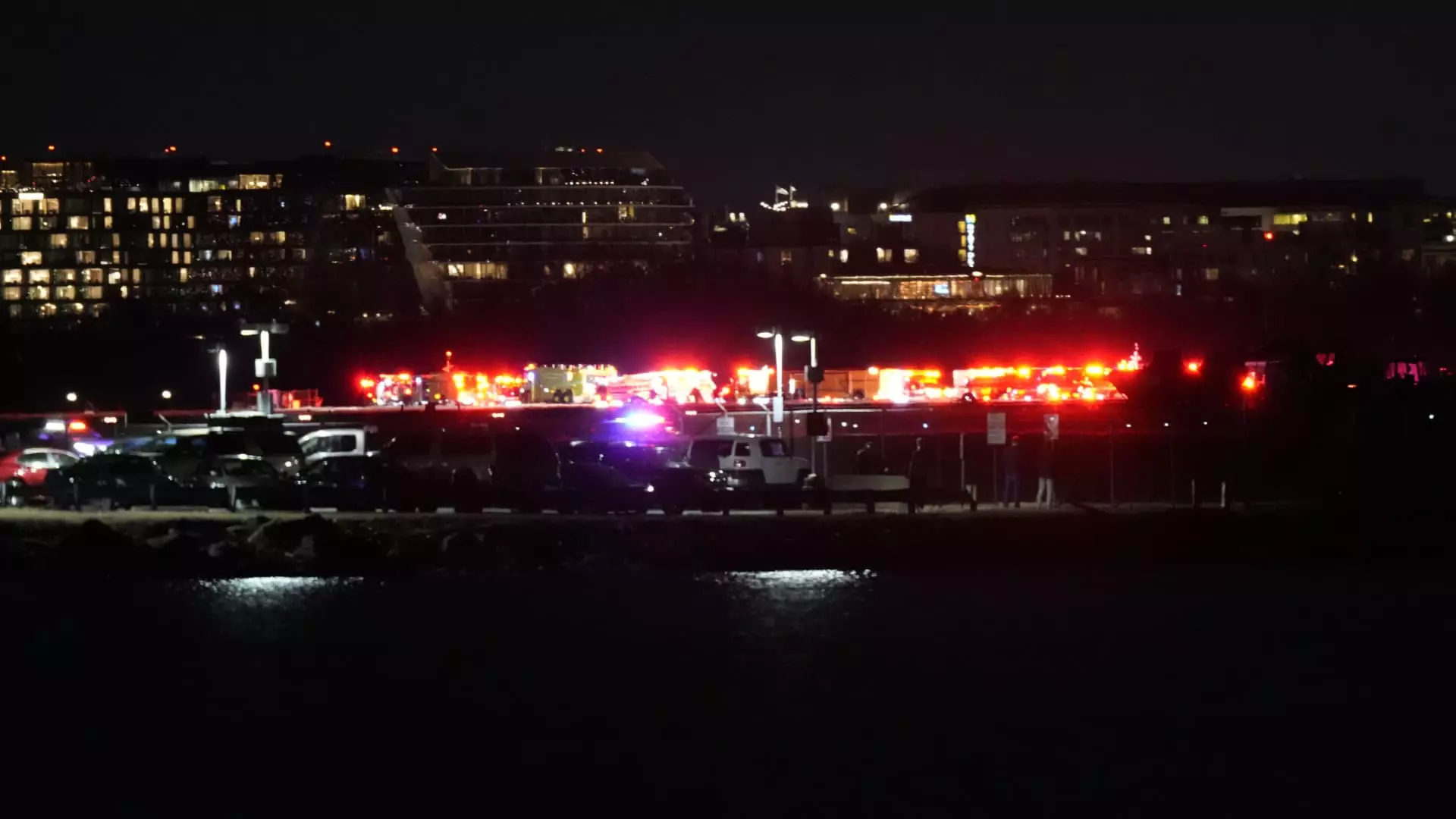In a troubling incident on Wednesday night, a collision occurred between an American Airlines regional jet and a military helicopter near Ronald Reagan Washington National Airport. This unfortunate event involved a PSA Airlines Bombardier CRJ700 jet, which was carrying 64 individuals, and a Sikorsky H-60 military helicopter. The crash happened around 9 p.m. ET, as the passenger jet was nearing its landing on Runway 33. This alarming occurrence has raised questions regarding airspace safety and the protocols that govern the operations of various types of aircraft in close proximity to one another.
The aircraft involved in the incident, designated Flight 5342, had taken off from Wichita, Kansas, and was in the final approach phase of its flight when the two vehicles collided. According to individuals familiar with the situation, the passenger jet was carrying 60 passengers alongside four crew members. As a result of the impact, local officials reported that at least one of the aircraft ended up in the Potomac River, leading to a significant deployment of emergency responders. Images shared on social media platforms showcased the extensive emergency presence at the scene, highlighting the severity of the situation.
Following the incident, the Federal Aviation Administration (FAA) issued a statement confirming the collision and announcing the airport’s temporary closure. In turn, American Airlines communicated through social media platform X, acknowledging the event and assuring the public that further information would be shared as it became available. The White House press office indicated that President Donald Trump had been briefed about the situation, reiterating the government’s active interest in the incident.
The responsibility for the investigation into the crash lies with the National Transportation Safety Board (NTSB). It is imperative for the NTSB to assess the circumstances that led to this collision, identifying any lapses in air traffic control protocols or miscommunications between the civilian and military sectors. The investigation will undoubtedly scrutinize both flight paths and the actions of the pilots involved to ascertain the contributing factors behind this grave incident.
The collision underscores a pressing concern regarding air safety, particularly in shared airspace where civilian and military flights coexist. This incident can serve as a catalyst for reevaluating existing regulations and improving air traffic management systems to prevent such alarming occurrences in the future. In light of this incident, stakeholders in aviation, including government agencies, airline companies, and military officials, must reinforce their commitment to safety protocols and communication practices.
As we await further updates and details from the ongoing investigation, families of those involved and the larger public remain hopeful for a thorough examination that will enhance the safety of air travel. This incident serves as a stark reminder of the challenges involved in ensuring the safe operation of aircraft in increasingly crowded airspace around major metropolitan areas.


Leave a Reply